In the reedy marshes and wetlands of North America, a striking blackbird species with a brilliant splash of yellow atop its head captures the attention of birdwatchers and nature enthusiasts. Meet the Yellow-Headed Blackbird (Xanthocephalus xanthocephalus), a captivating bird known for its vibrant plumage, distinct calls, and its integral role in wetland ecosystems. In this article, we will delve into the world of the Yellow-Headed Blackbird, exploring its appearance, habitat, behavior, and the significance of its conservation.
Yellow-Headed Blackbird images
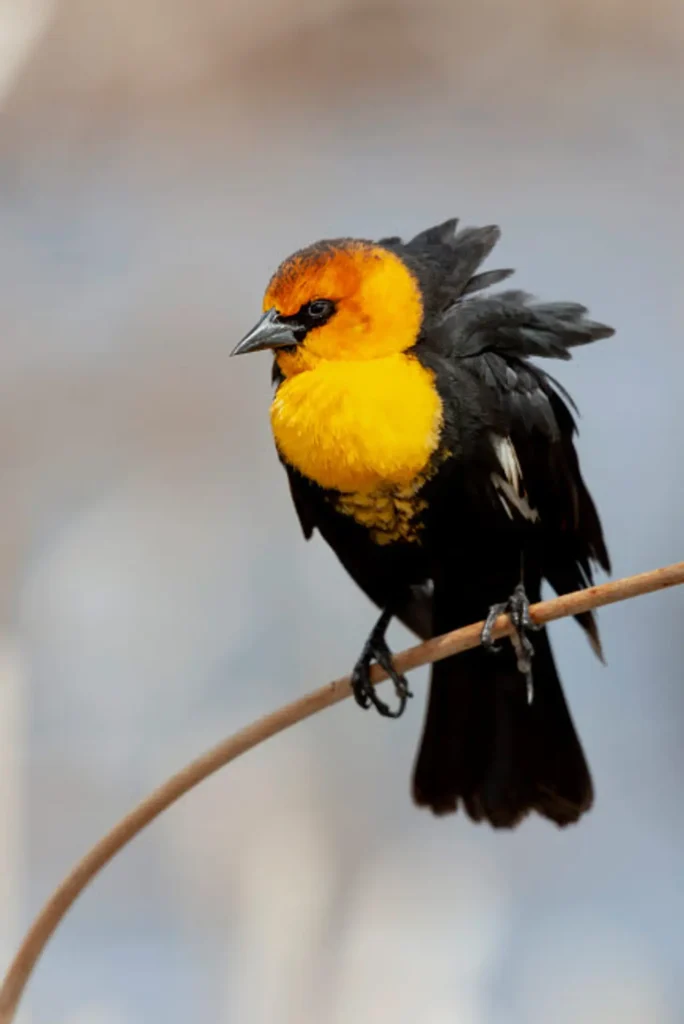
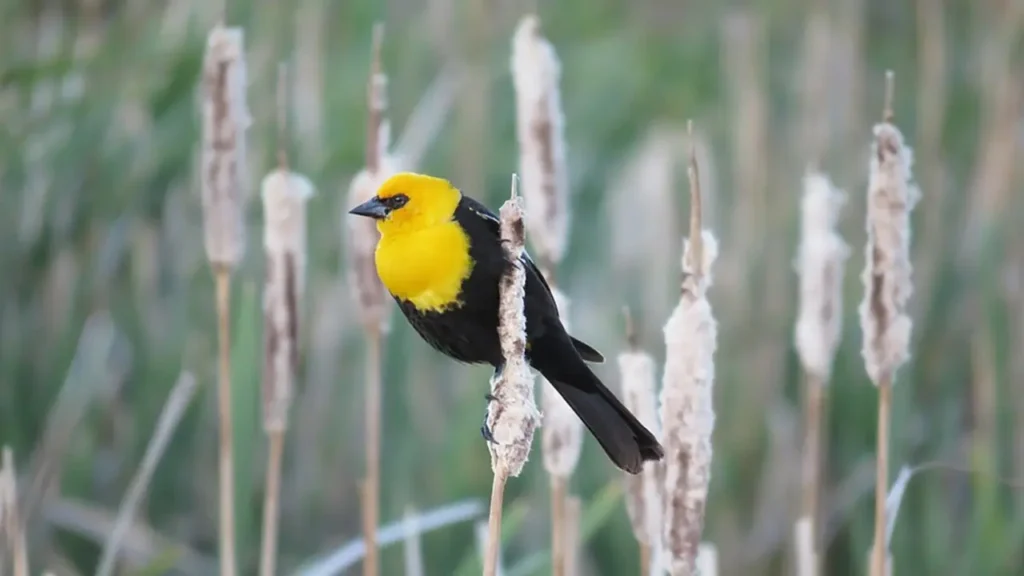
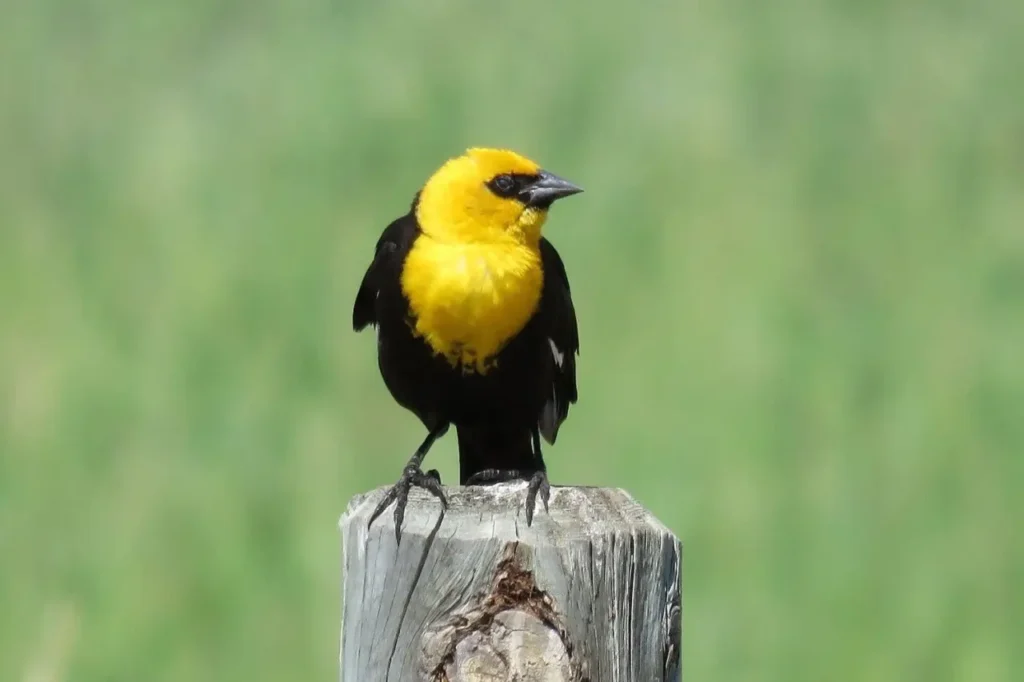
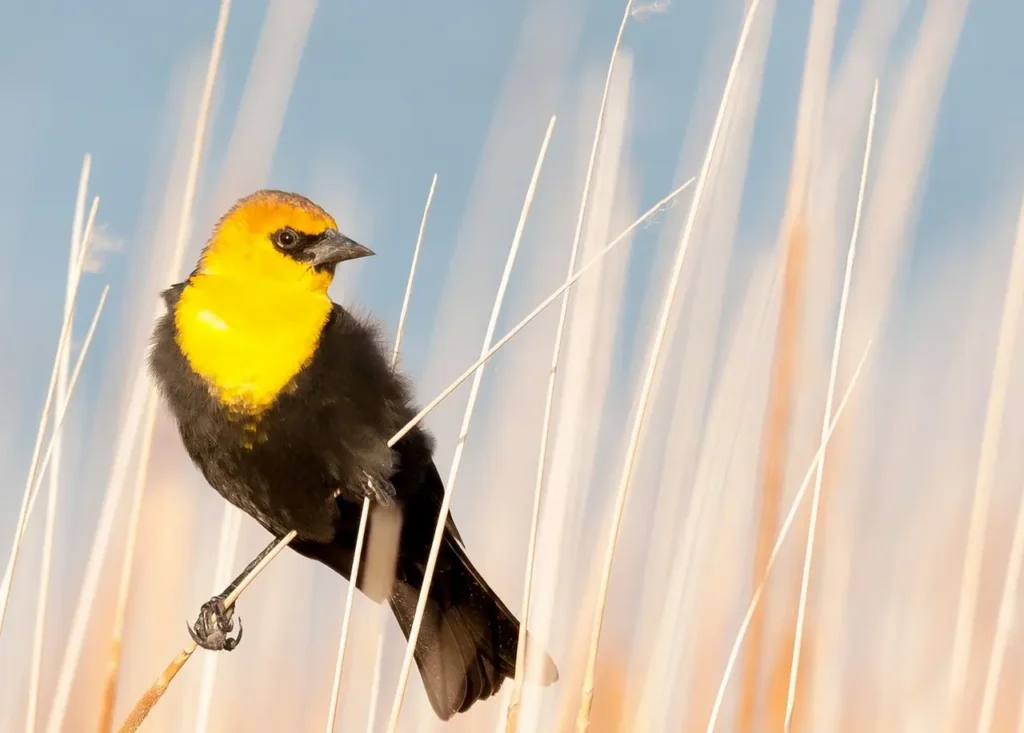
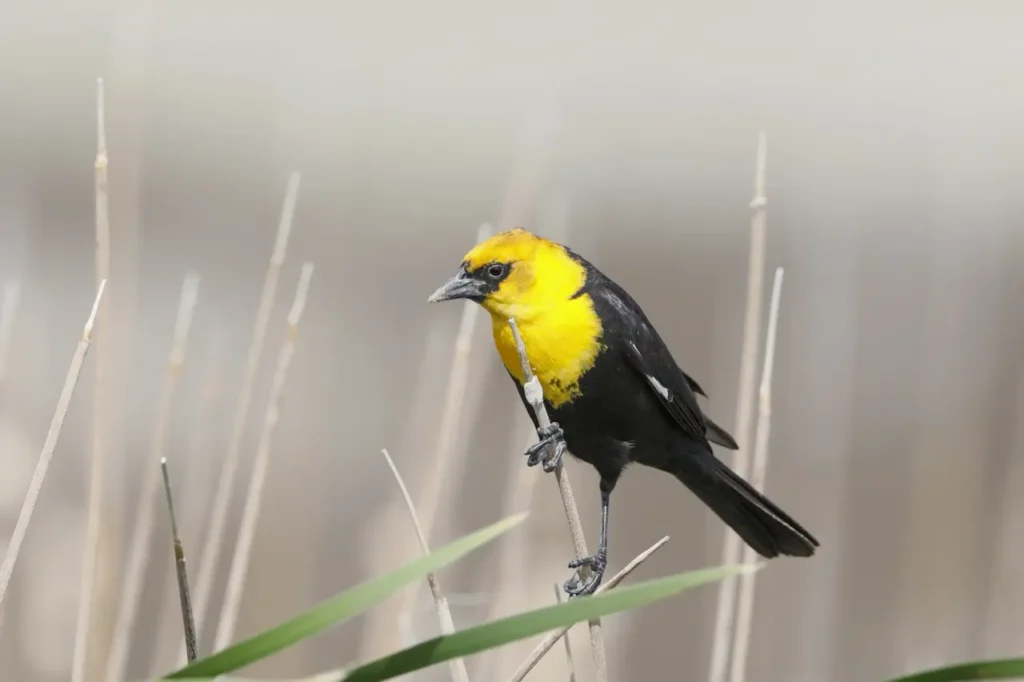
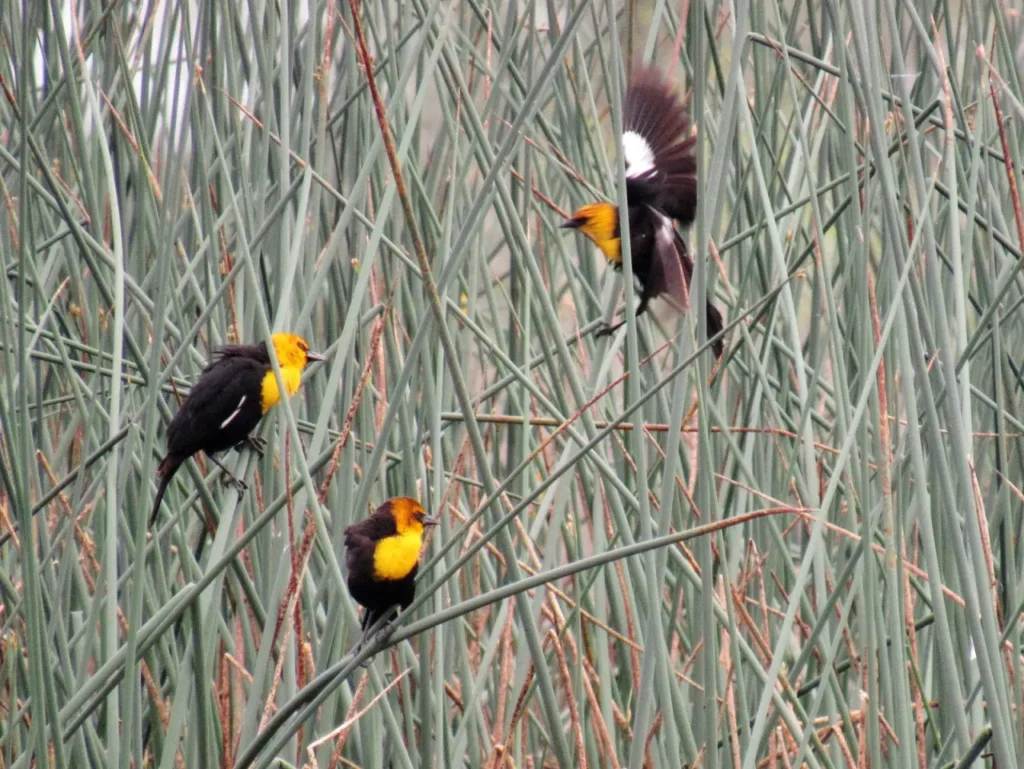
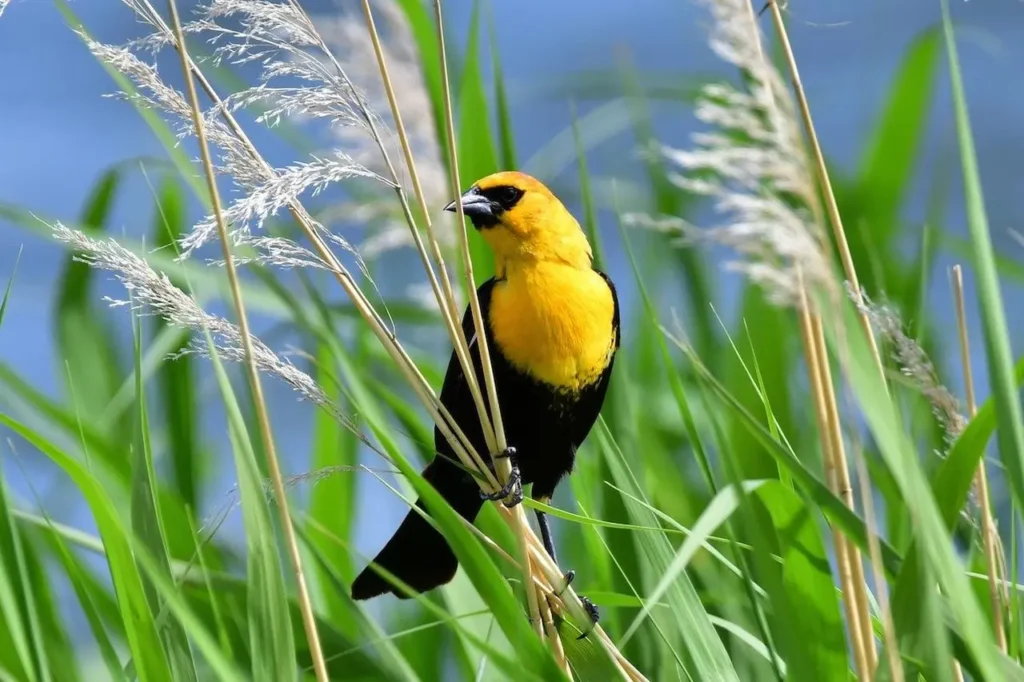
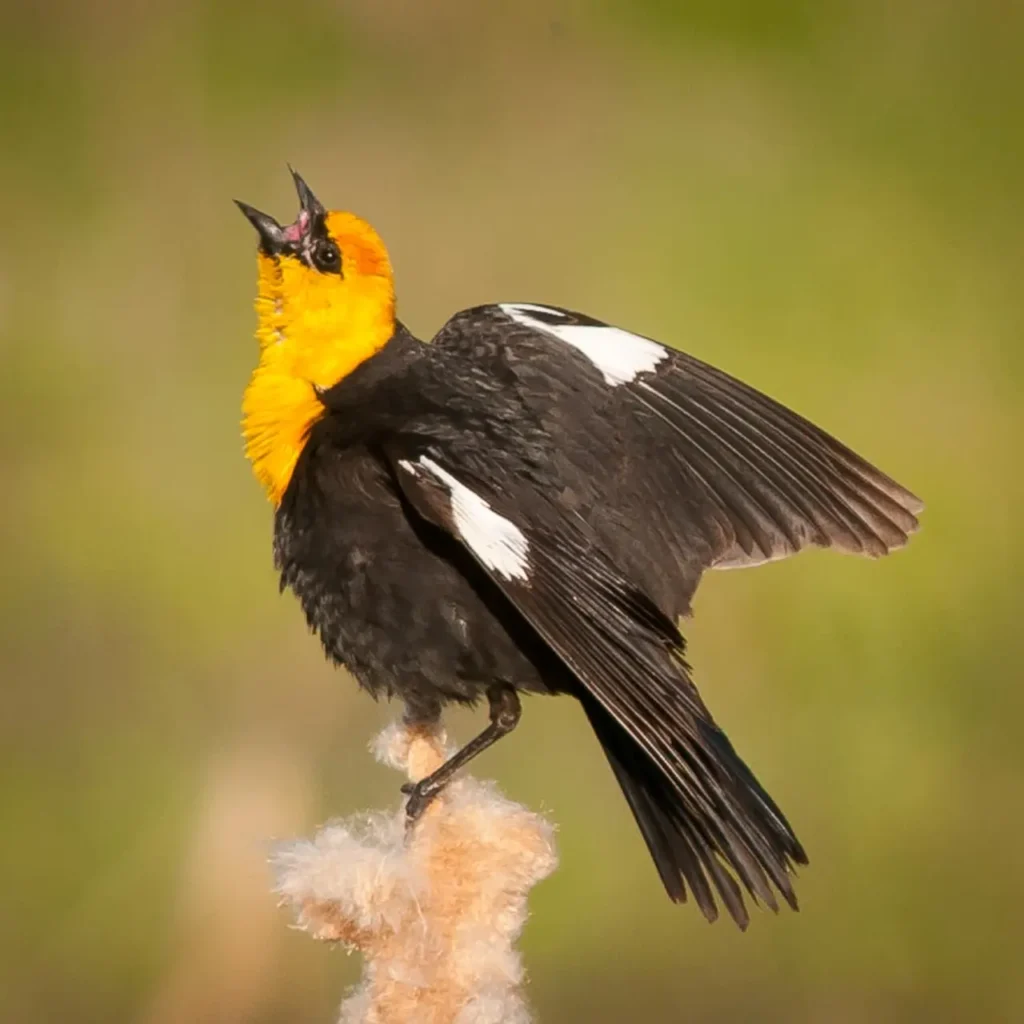
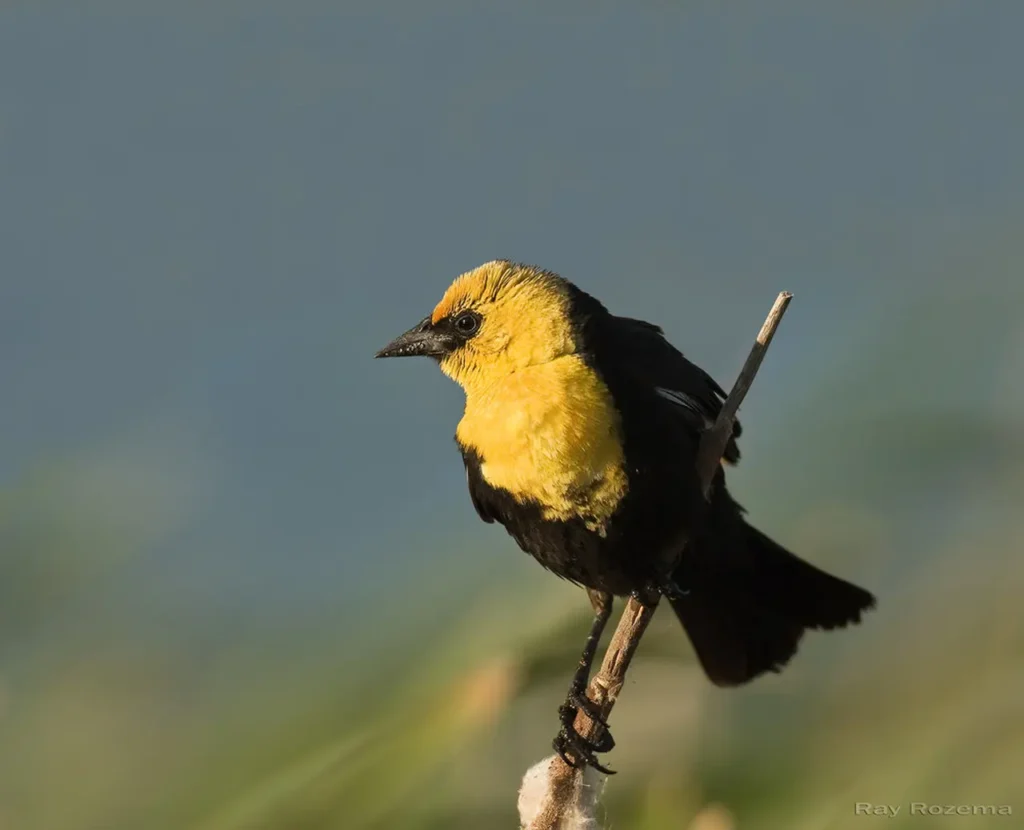
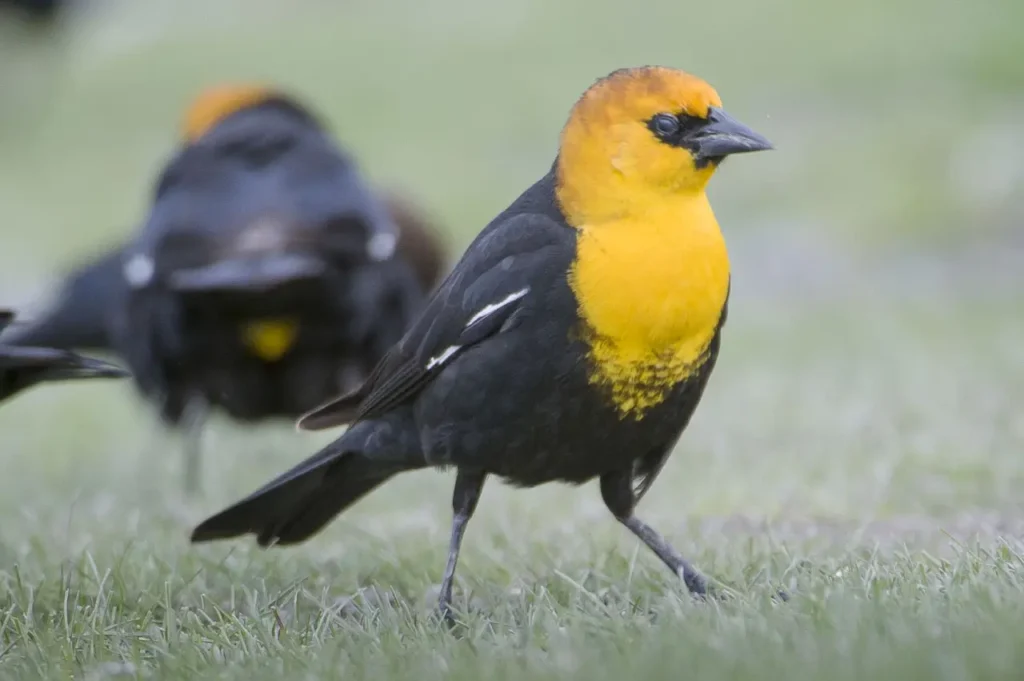
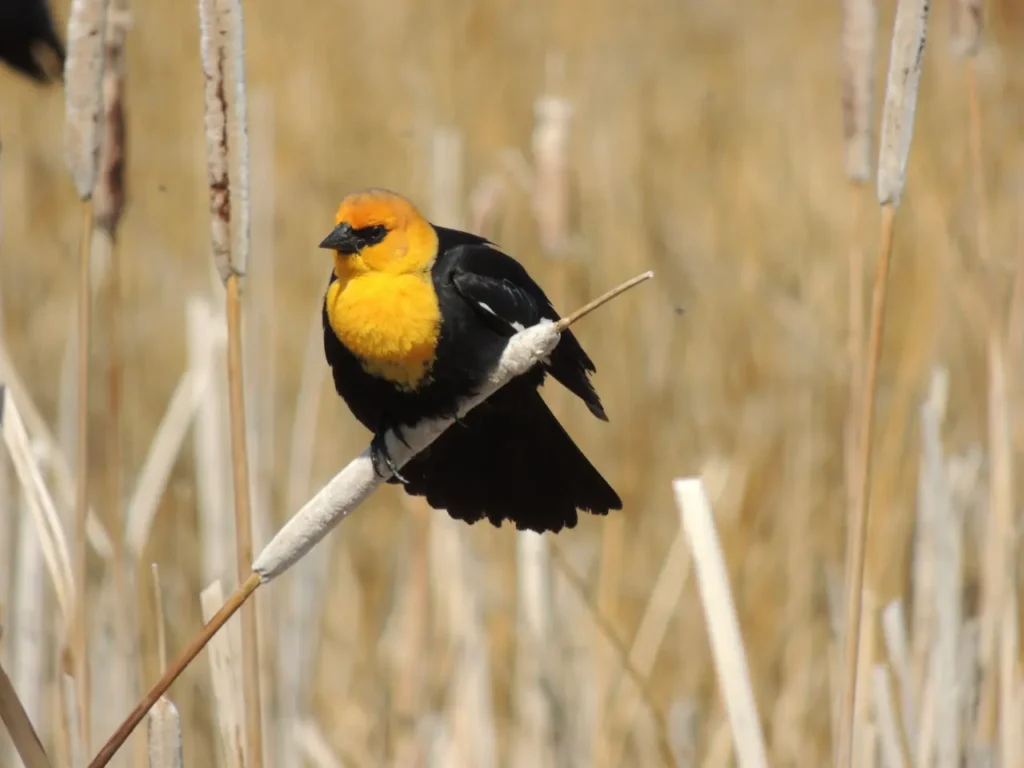
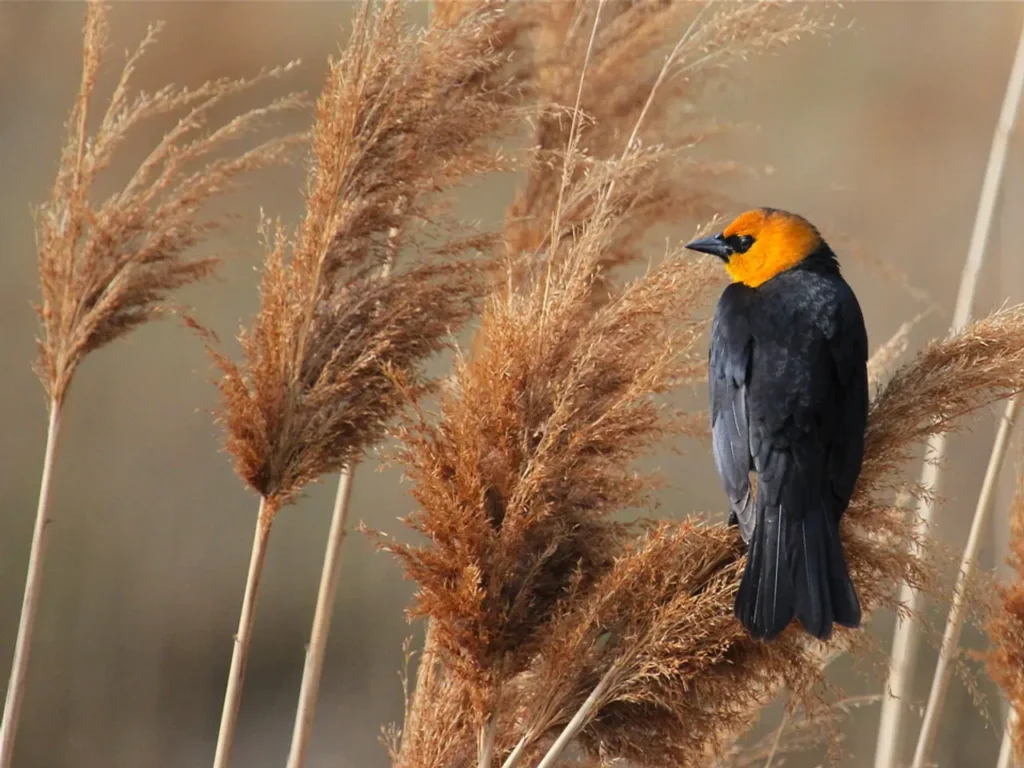
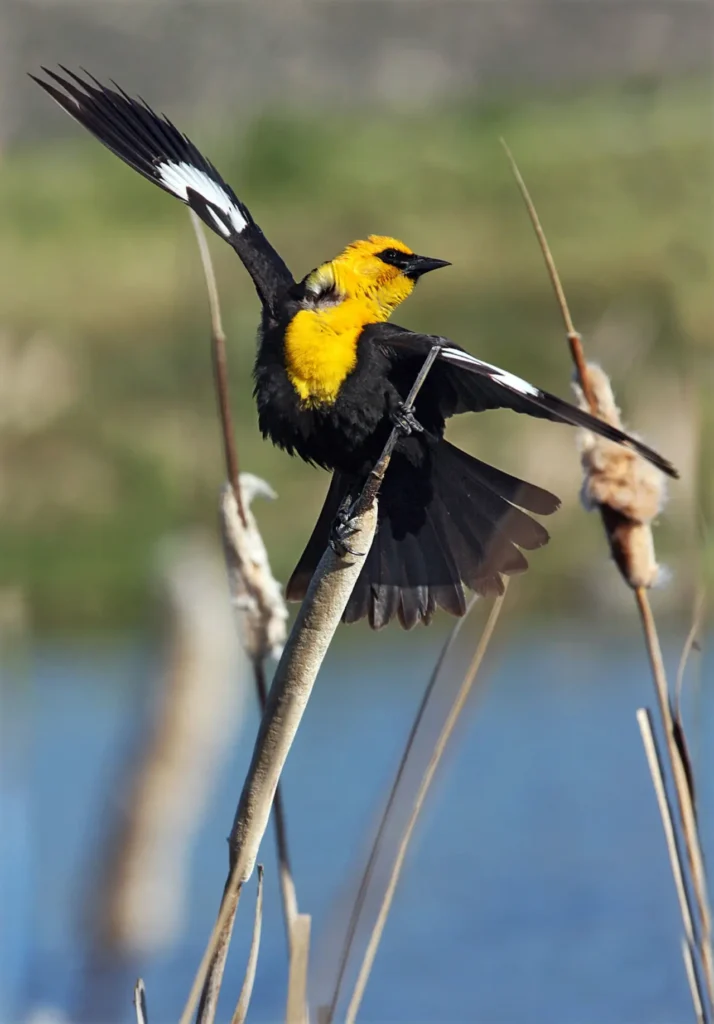
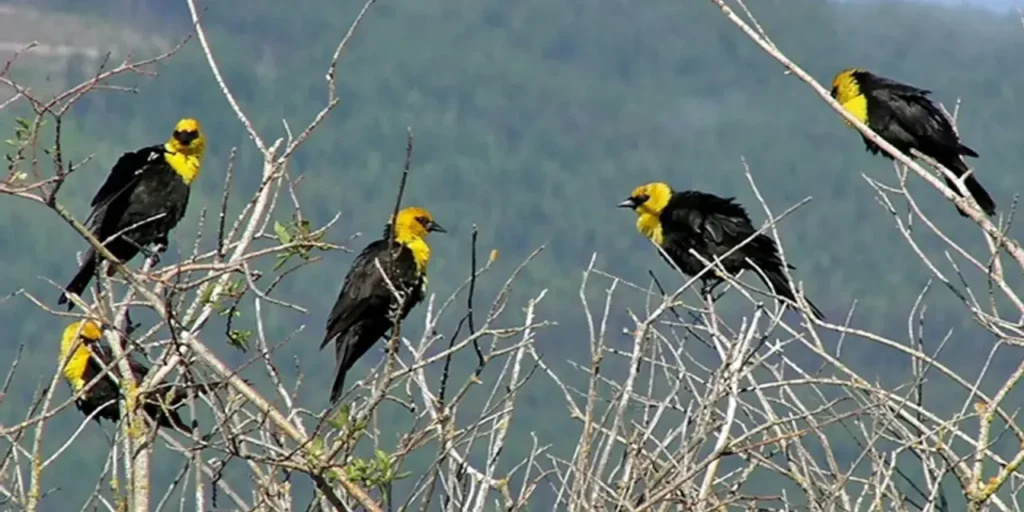
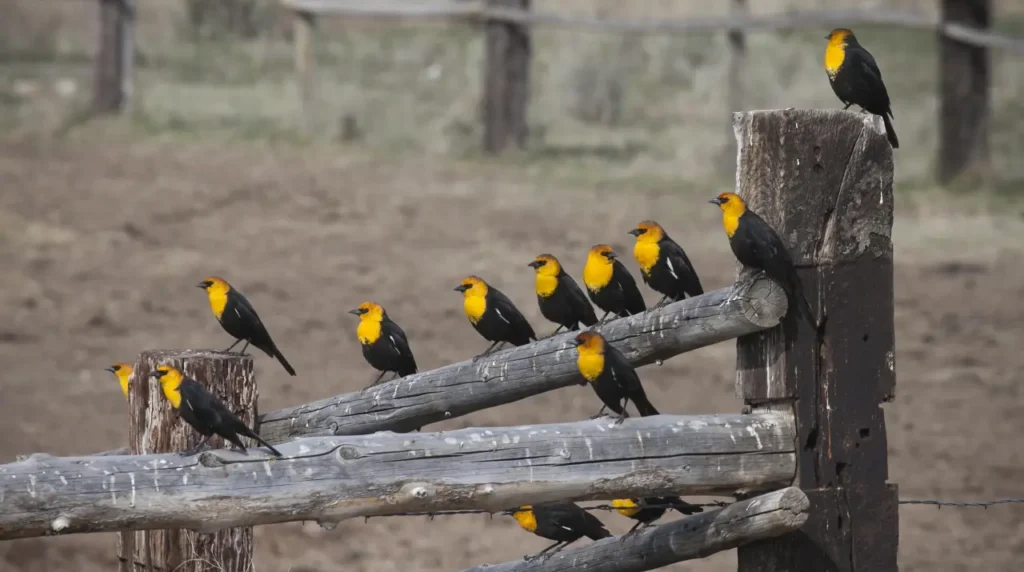
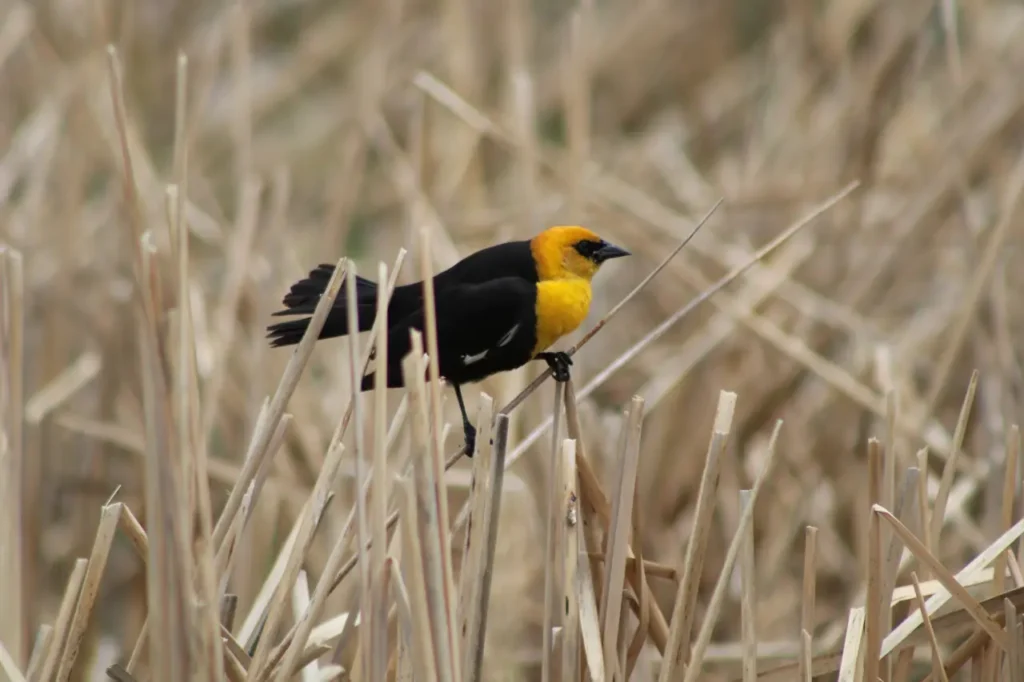
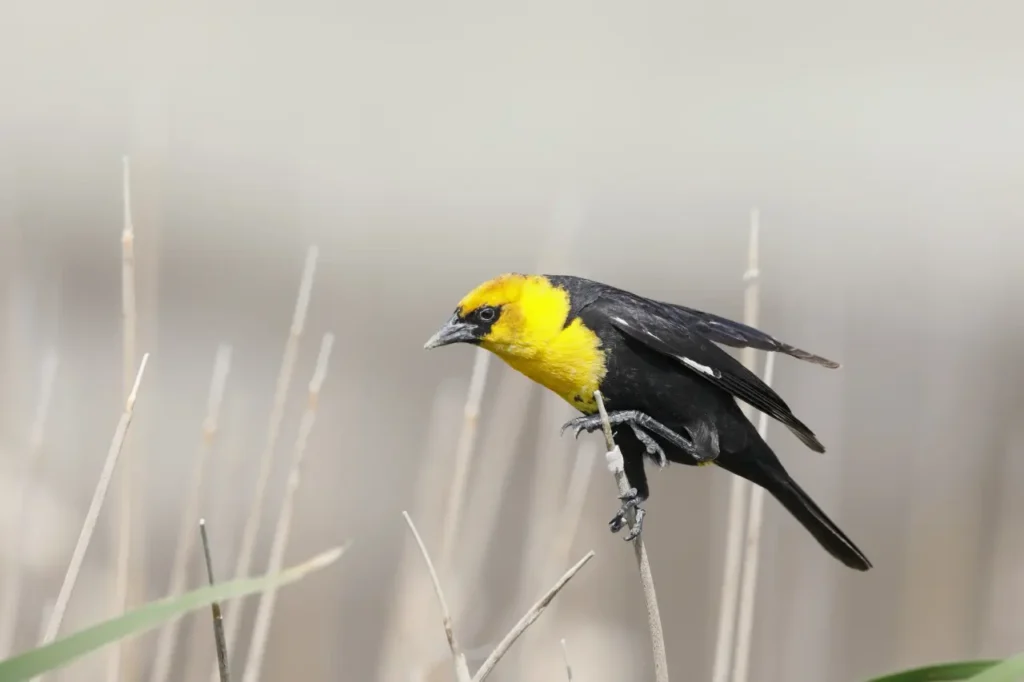
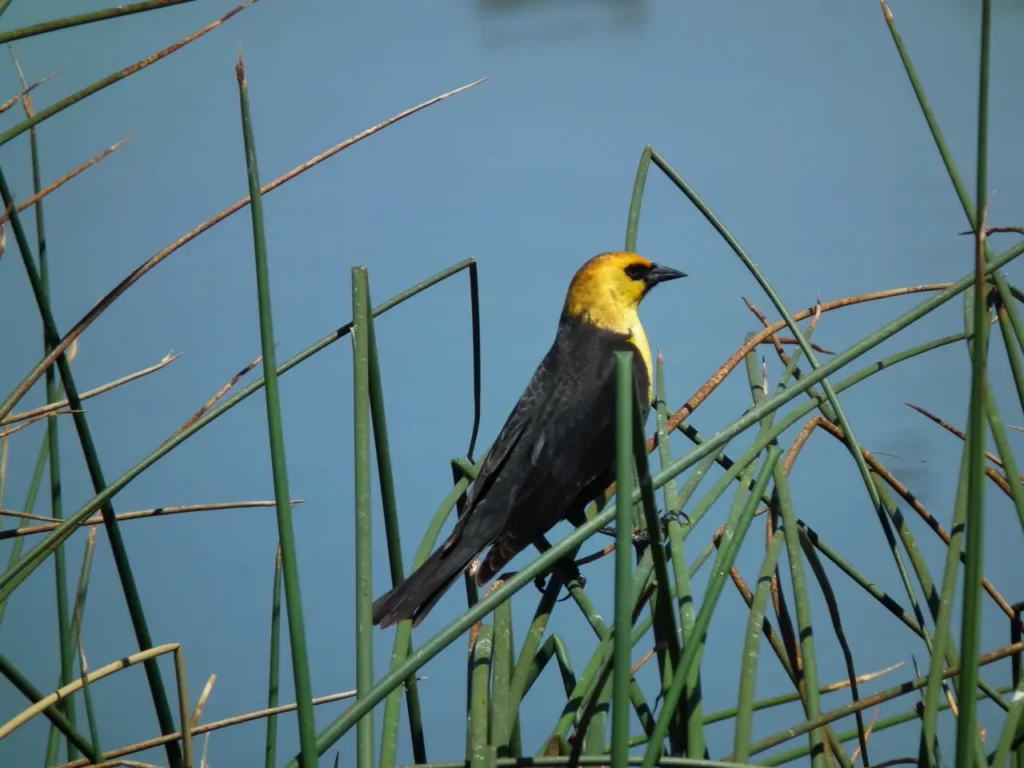
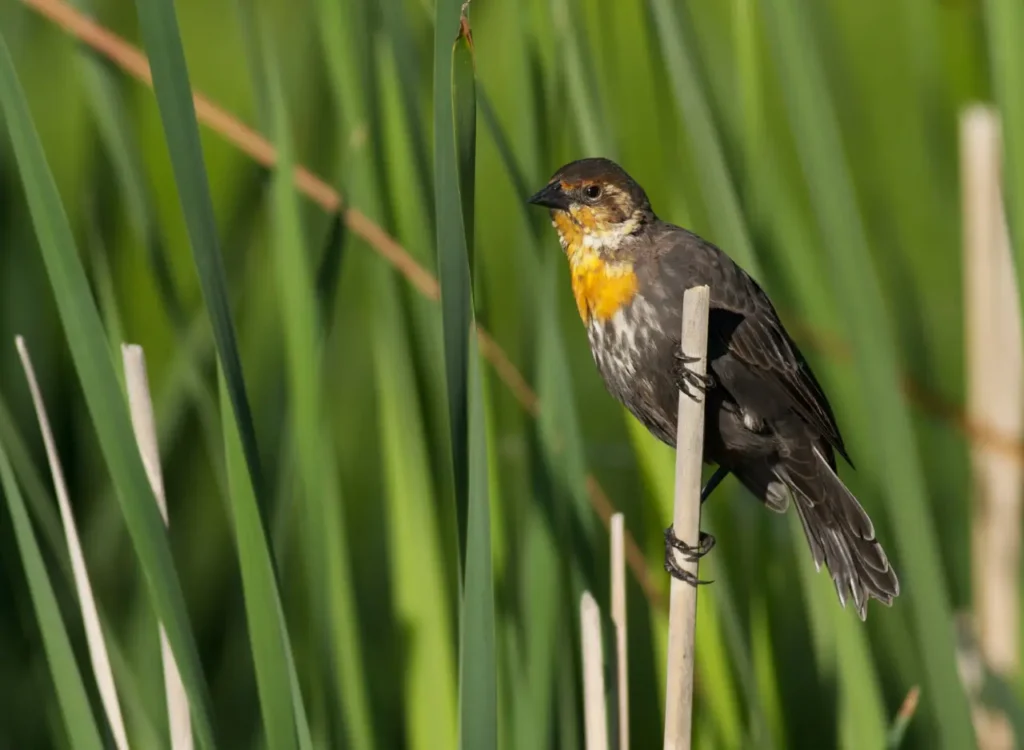
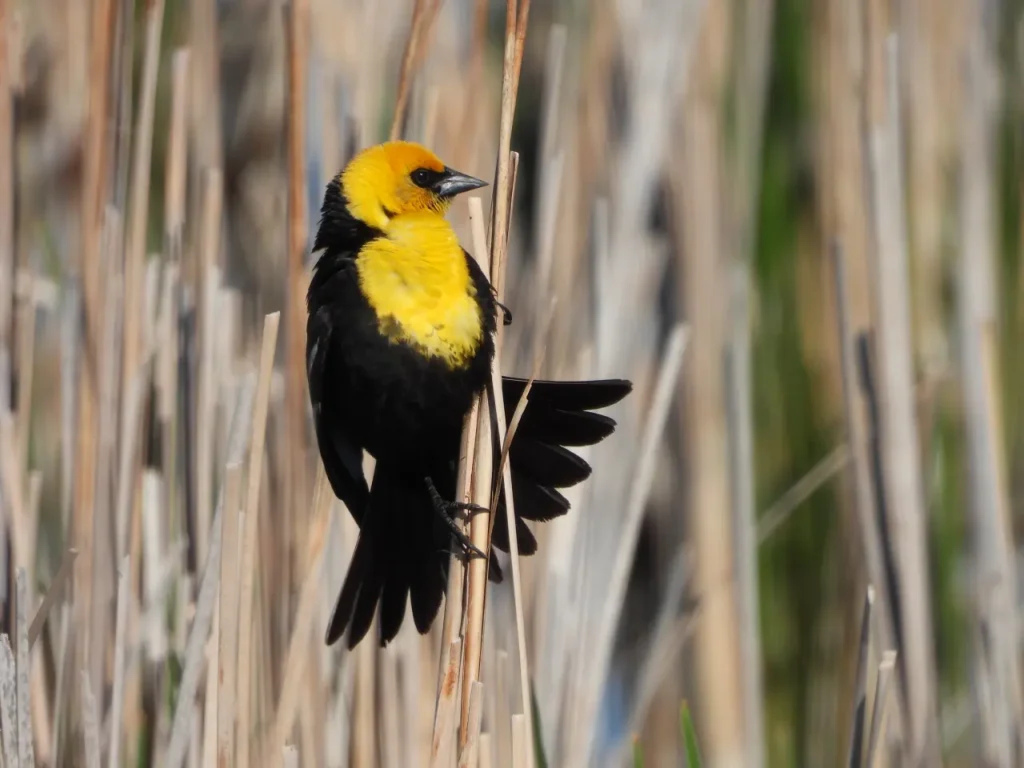
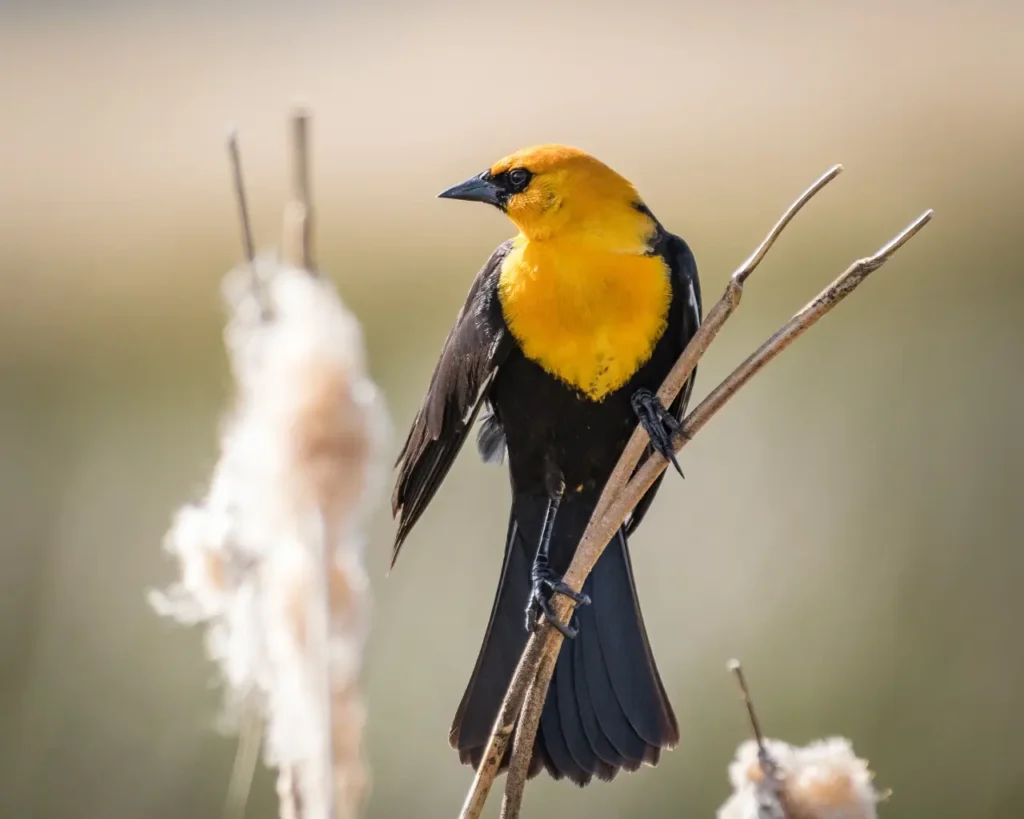
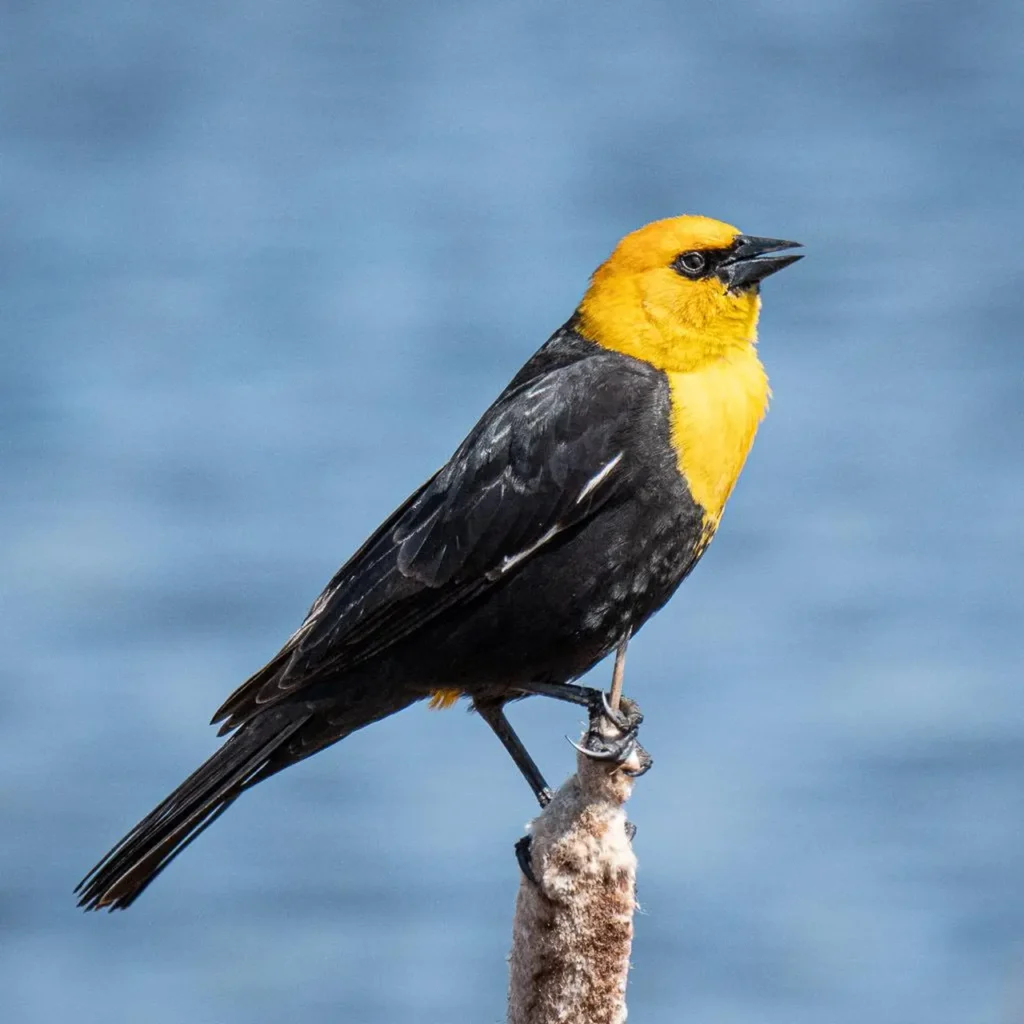
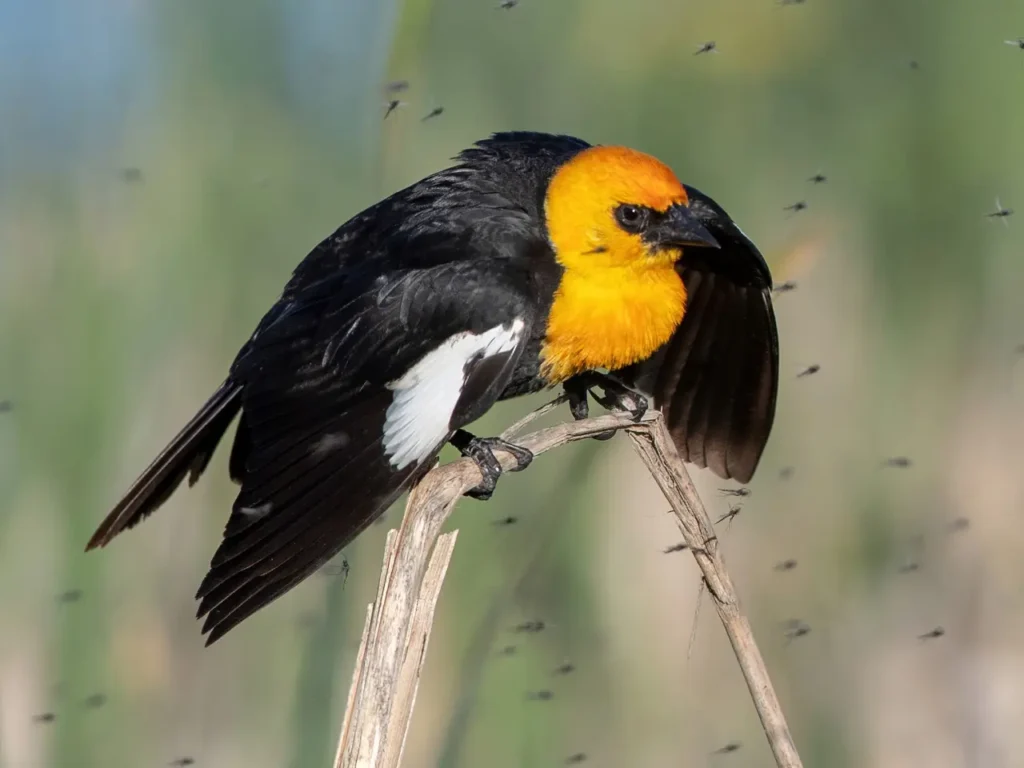
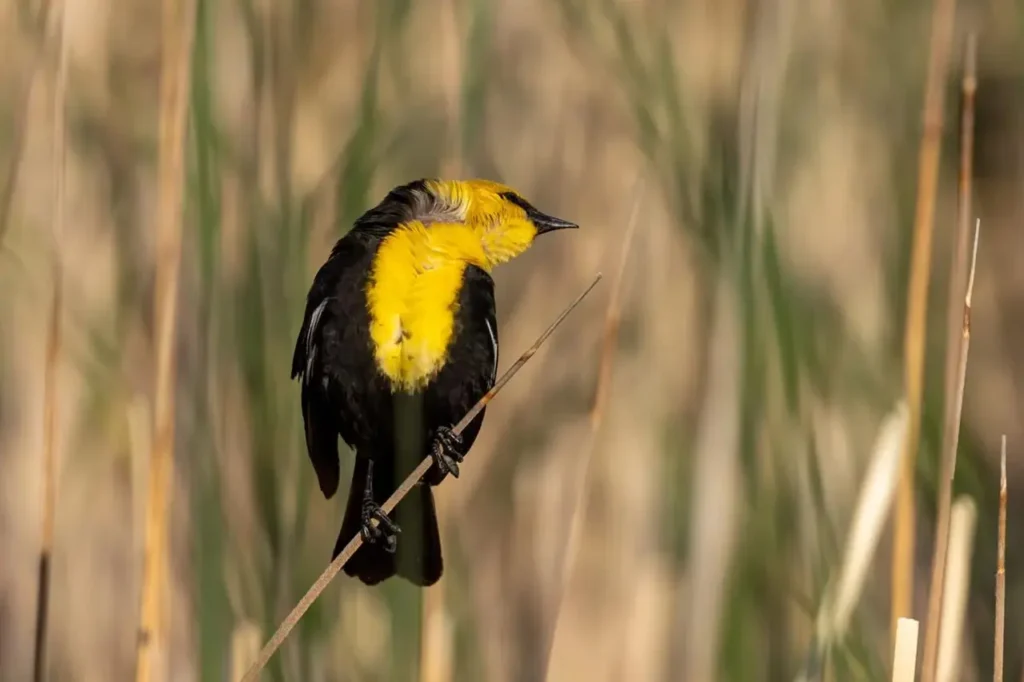
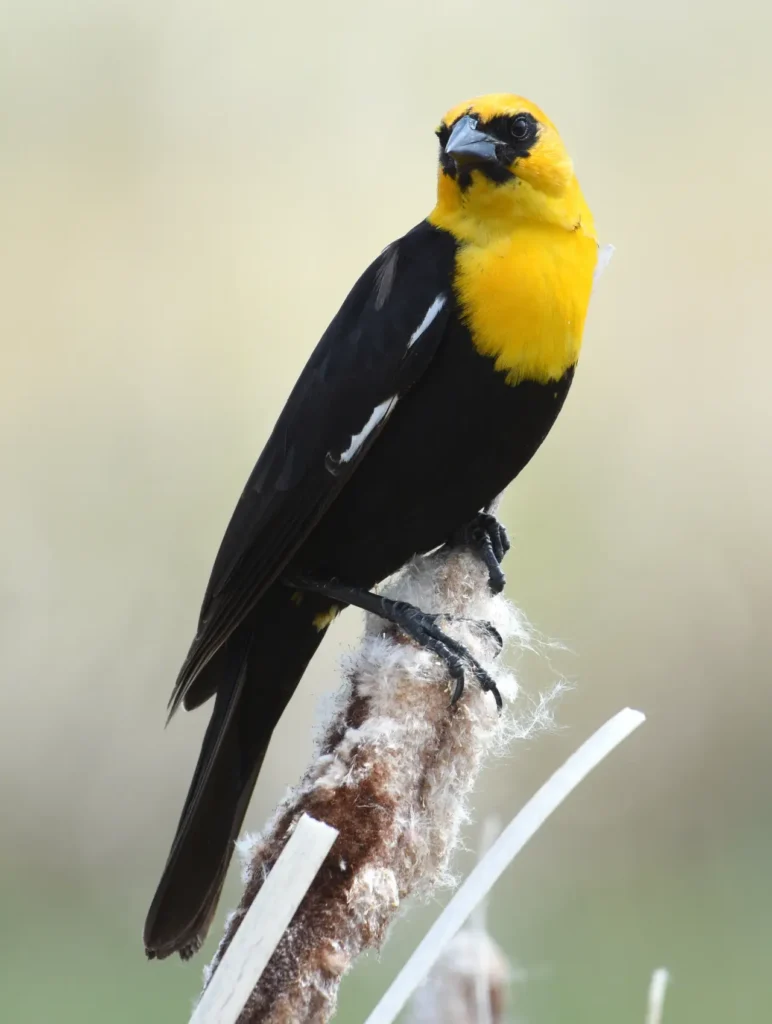
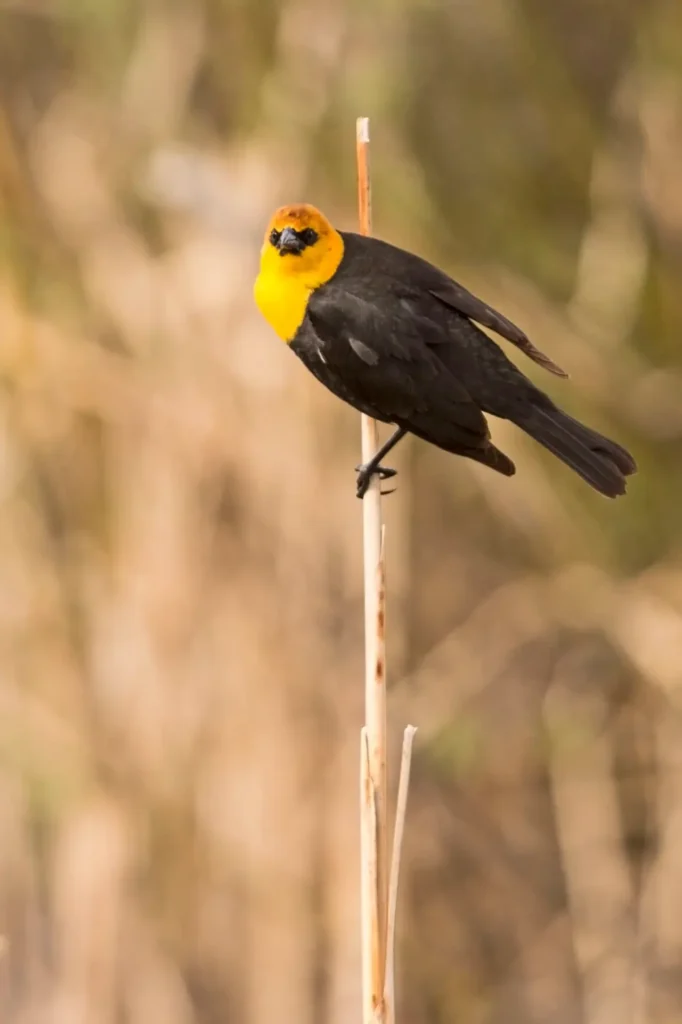
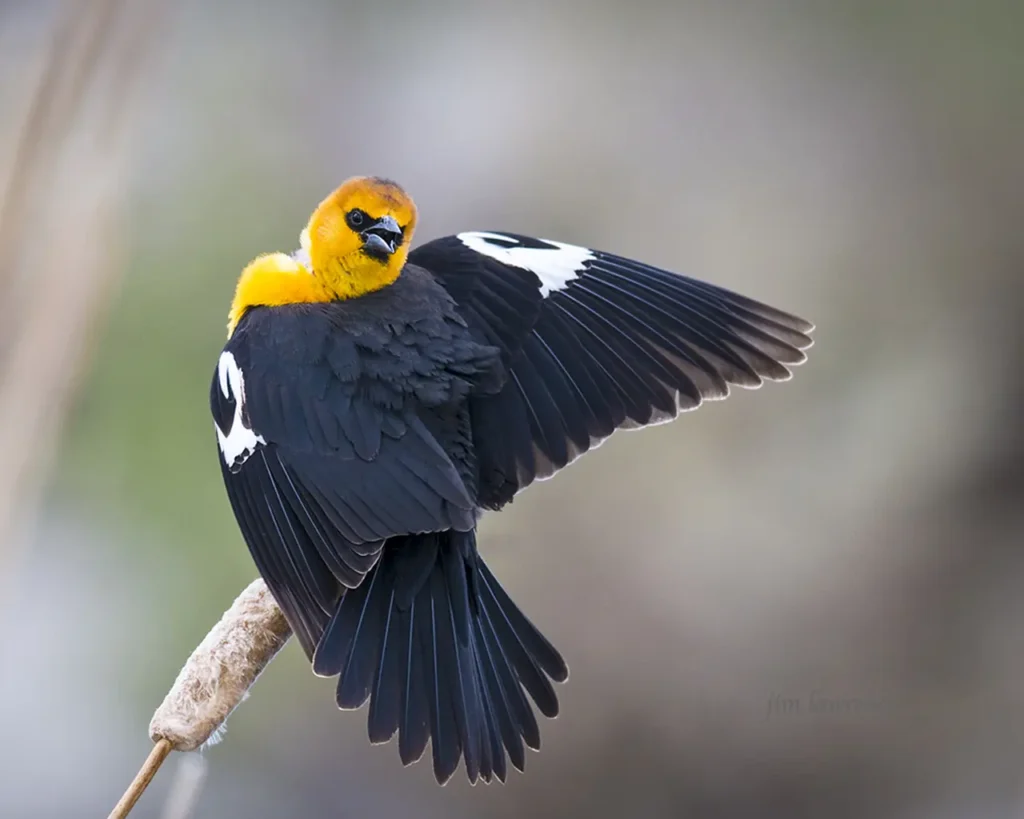
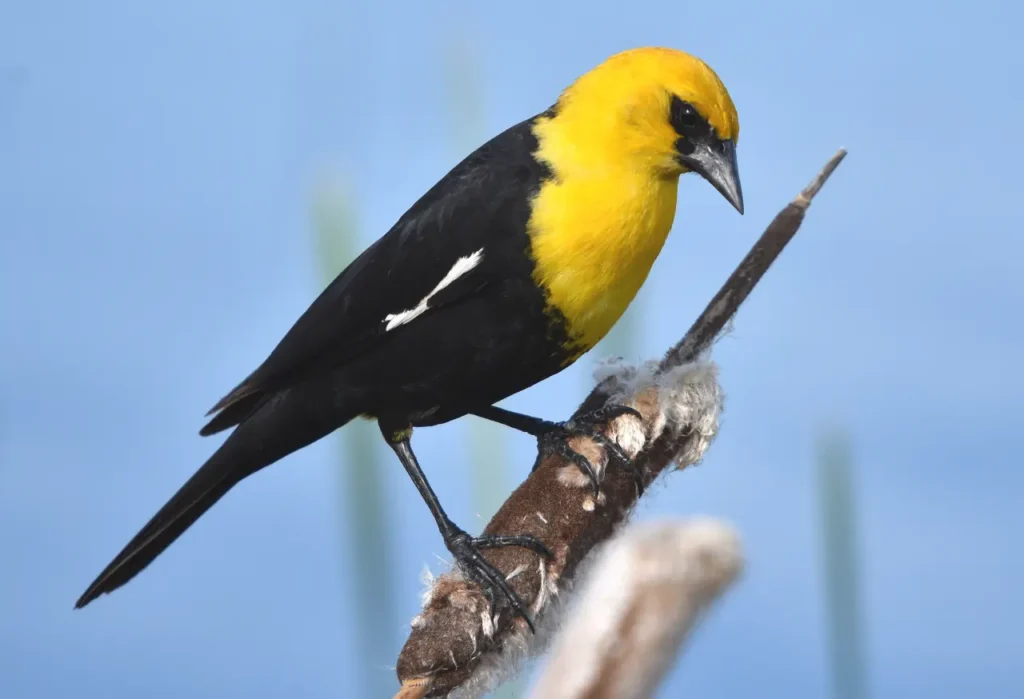
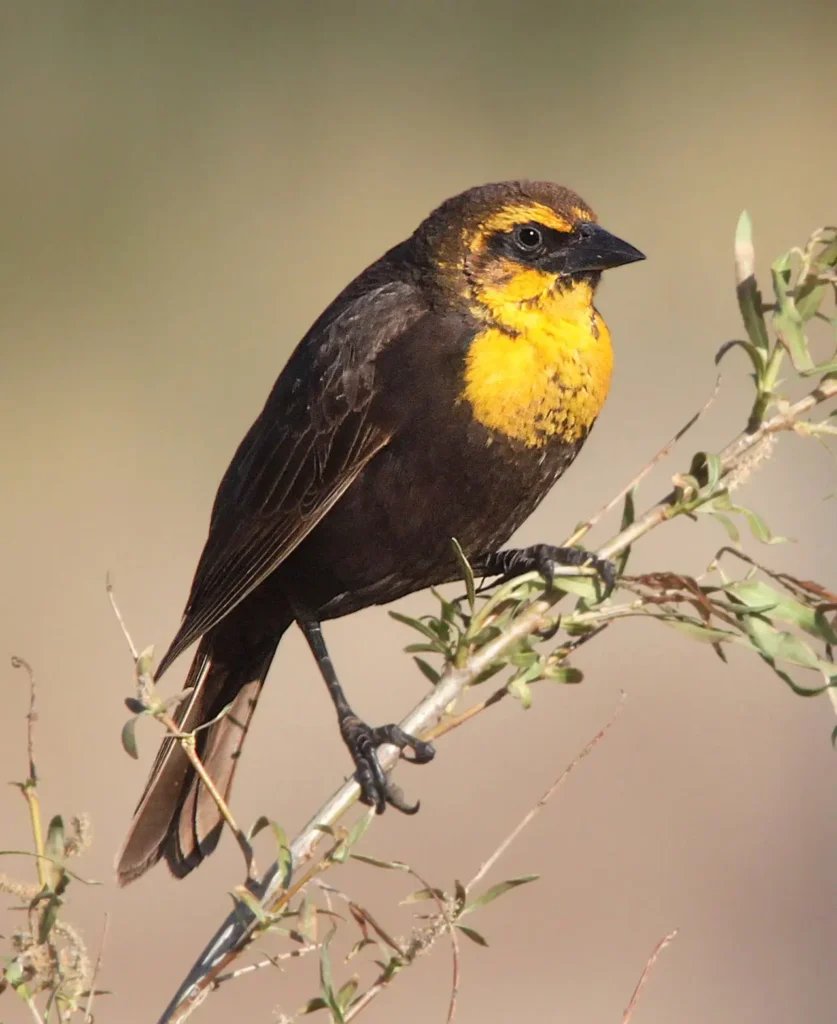
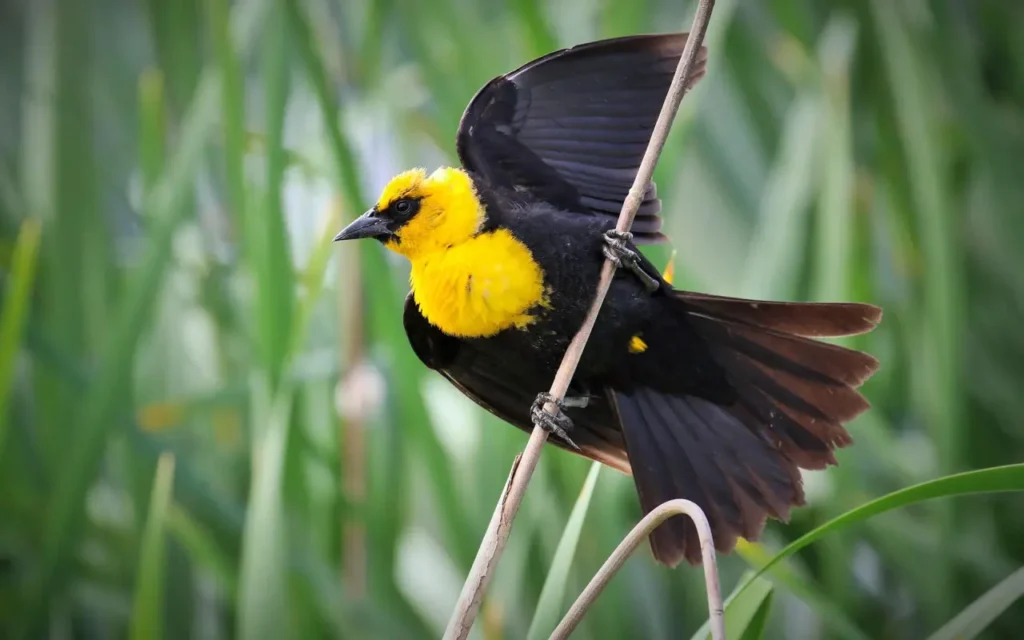
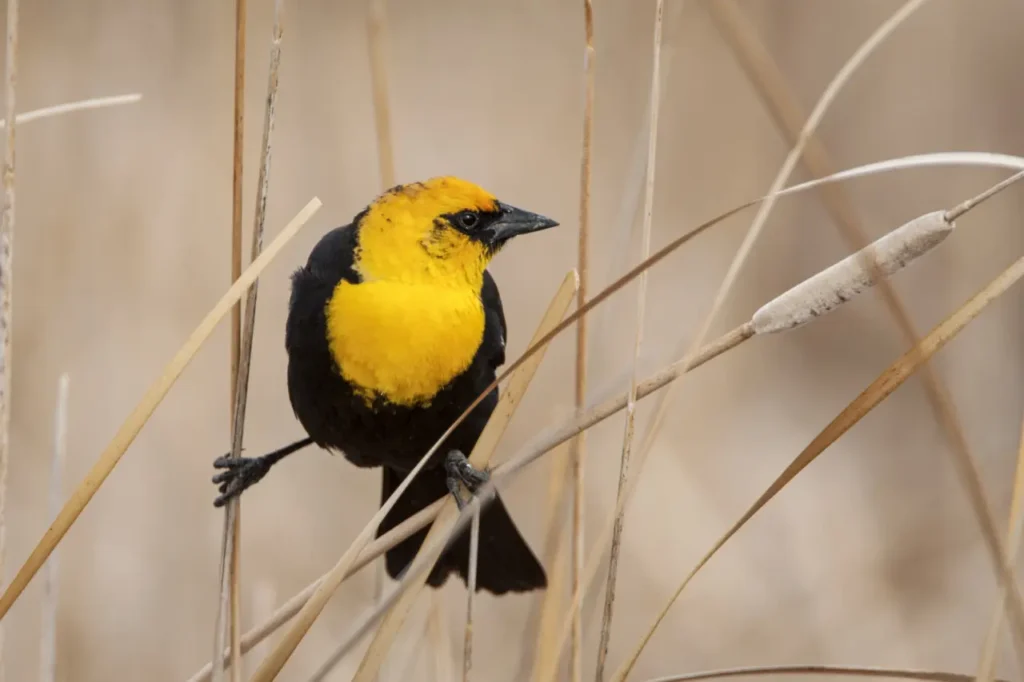
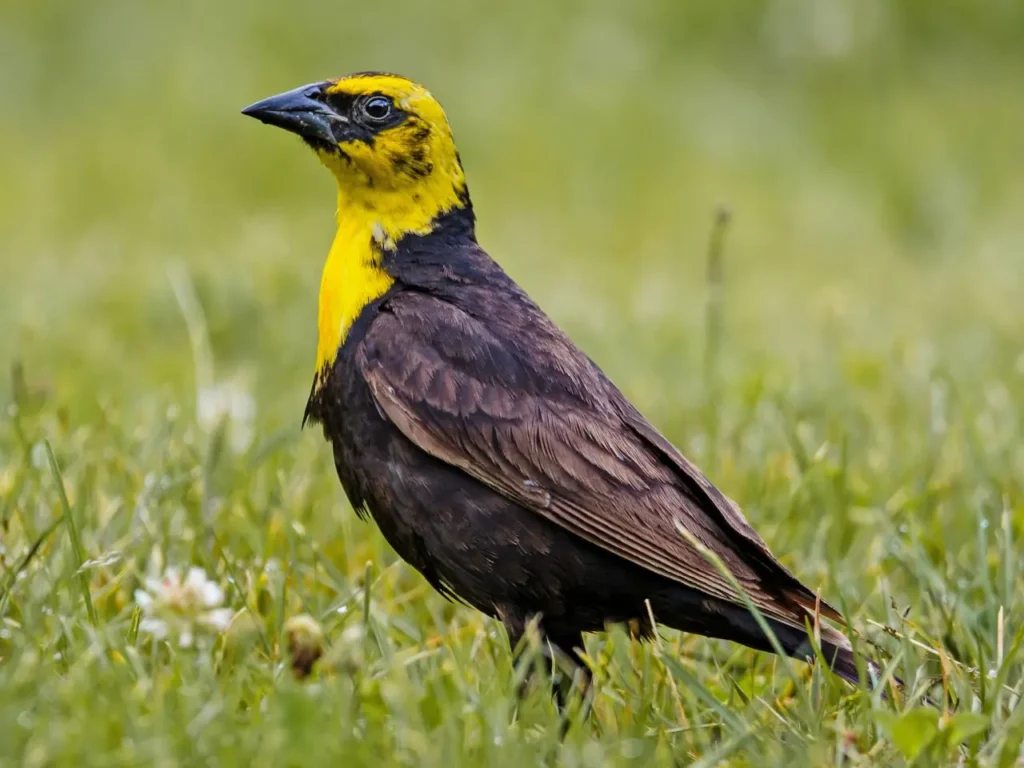
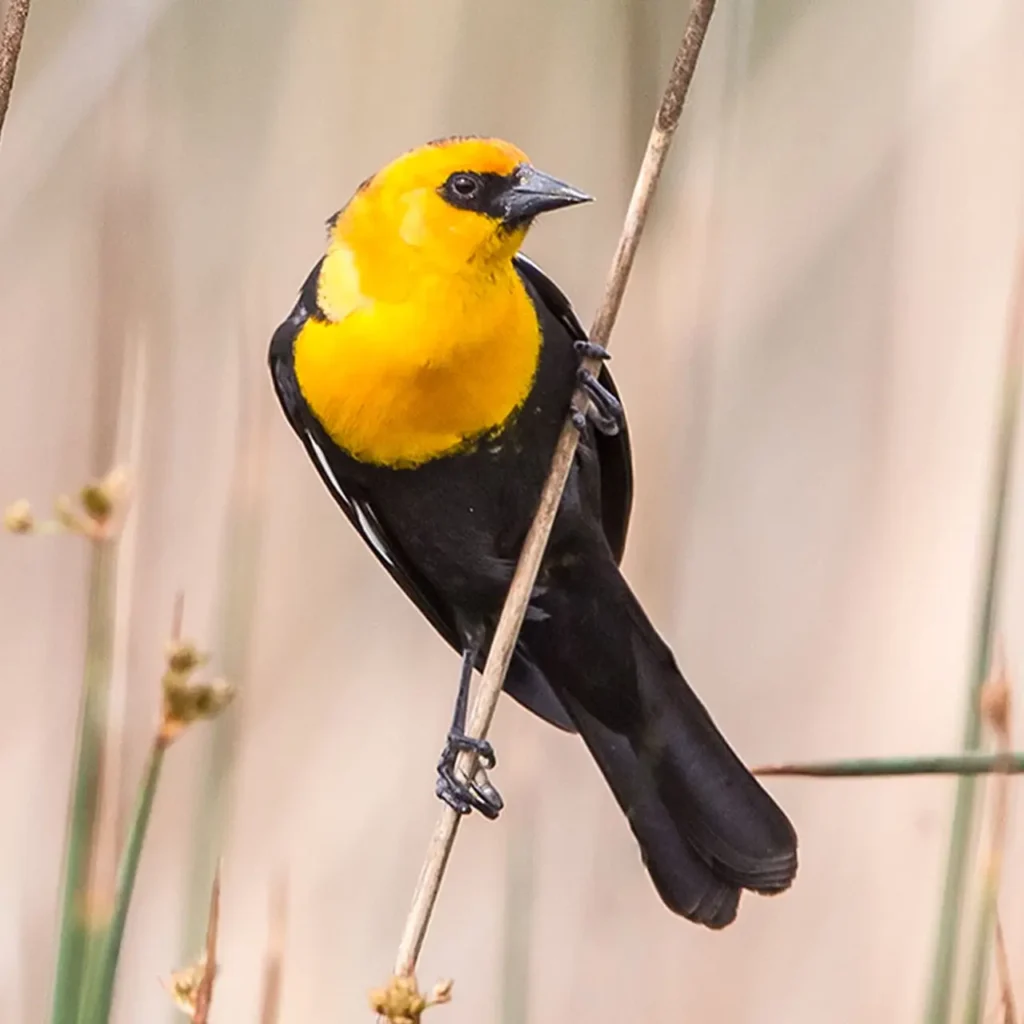
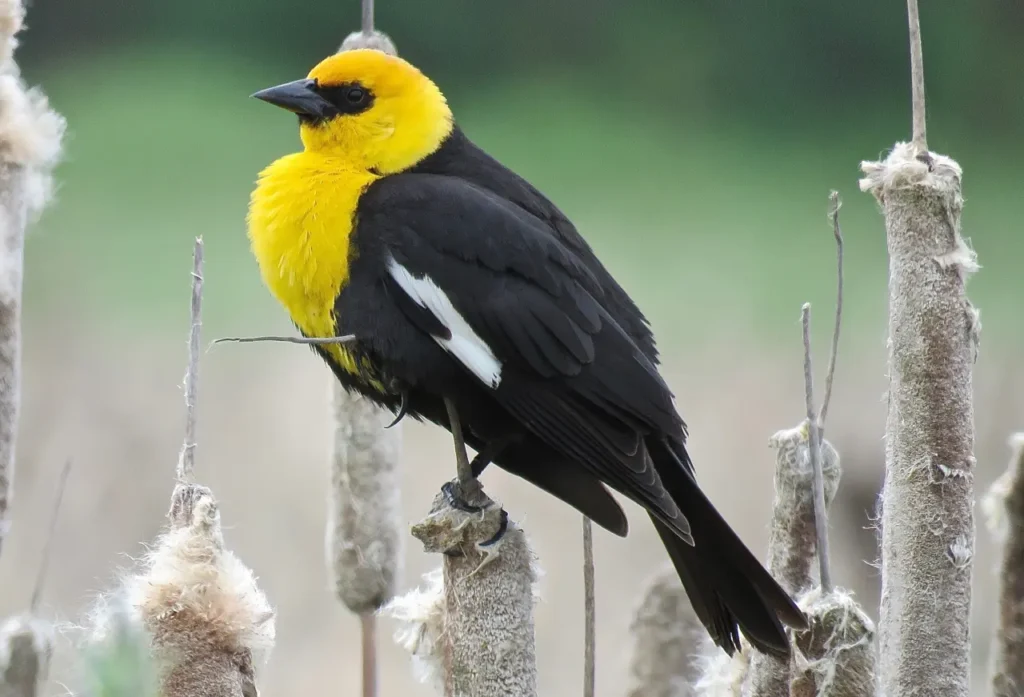
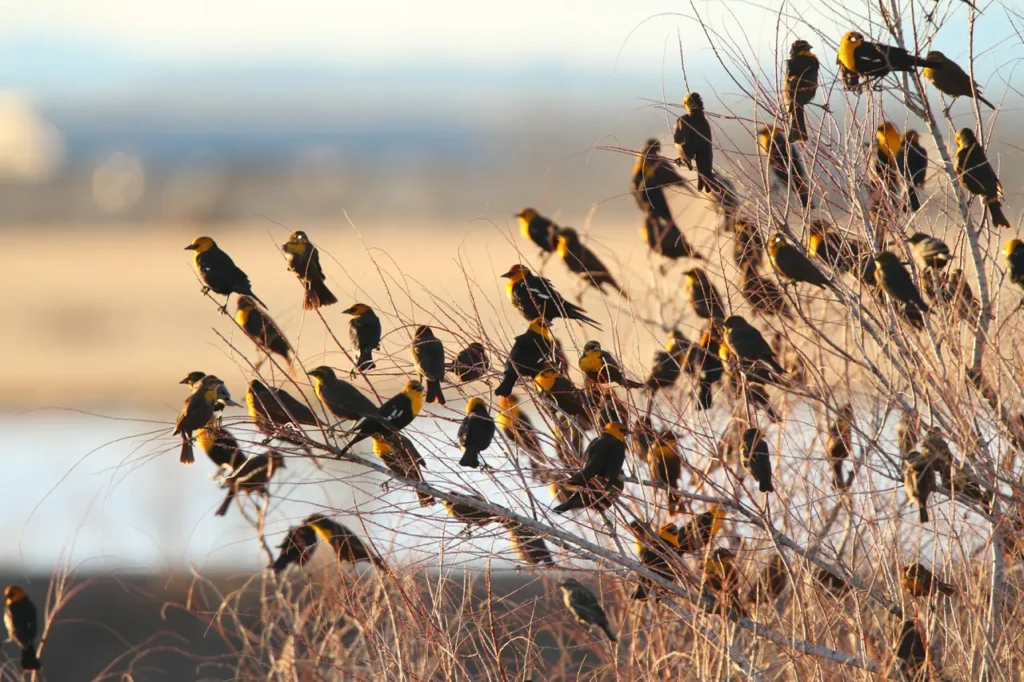
Appearance and Distinctive Features
The Yellow-Headed Blackbird is a medium-sized passerine bird with a bold and eye-catching appearance. Adult males showcase a striking combination of black plumage on their body, wings, and tail, contrasted with a brilliant yellow head and neck. The yellow extends from the top of their bill, through their eyes, and down to their throat. Females and juveniles, on the other hand, have more subdued coloring, with brown and streaked plumage.
Habitat and Distribution
Yellow-Headed Blackbirds primarily inhabit freshwater and brackish marshes, wet meadows, and riparian habitats across western North America. They can be found from British Columbia and Alberta in Canada down to California, Nevada, and parts of Mexico. These birds are often associated with cattail marshes, where they construct their nests and forage for food.
Behavior and Vocalizations
Male Yellow-Headed Blackbirds are known for their distinctive and melodious songs. Their vocalizations range from a series of clear, flute-like notes to rattling calls and metallic screeches. These vocal displays are often performed from prominent perches to establish territories and attract mates. Males also engage in elaborate flight displays, fluffing their feathers and spreading their wings to showcase their vibrant yellow plumage.
Yellow-Headed Blackbirds are omnivorous, feeding on a variety of plant materials, insects, and small invertebrates. They have a particular affinity for the seeds of cattails and other wetland plants. They forage by clinging to vegetation or by probing the muddy substrate with their bills.
Ecological Importance
Yellow-Headed Blackbirds play a crucial role in wetland ecosystems. Their foraging behavior helps control insect populations, particularly those that may pose a threat to wetland plants. Their feeding habits also aid in dispersing seeds, contributing to the spread and regeneration of wetland plant species. Additionally, as an indicator species, the presence and health of Yellow-Headed Blackbird populations can serve as an indicator of wetland habitat quality.
Conservation and Challenges
While the Yellow-Headed Blackbird is not currently considered globally threatened, it faces several conservation challenges. Loss and degradation of wetland habitats due to agricultural expansion, urban development, and invasive species pose significant threats to their populations. Wetland conservation efforts, habitat restoration, and the protection of breeding sites are essential for the long-term survival of these captivating birds.
Appreciating and Protecting Wetland Icons
The Yellow-Headed Blackbird stands as an emblematic bird of wetlands, representing the beauty and biodiversity of these vital ecosystems. Their vibrant plumage and enchanting calls make them a delight to observe and cherish. By valuing and safeguarding wetland habitats, we not only ensure the survival of the Yellow-Headed Blackbird but also protect the delicate balance of wetland ecosystems that provide numerous ecological benefits for both wildlife and humans alike.
The Yellow-Headed Blackbird, with its bold black and yellow plumage and captivating vocalizations, is a true icon of North American wetlands. Its presence adds vibrancy and charm to marshes and wet meadows, while its ecological contributions play a vital role in maintaining the health of these precious habitats. By understanding and appreciating the Yellow-Headed Blackbird, we can work towards preserving and conserving the wetlands they call home, ensuring their continued survival and the preservation of the invaluable ecosystems they inhabit.








